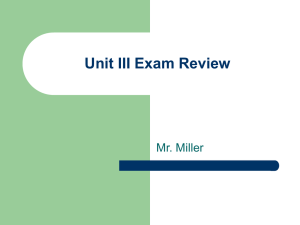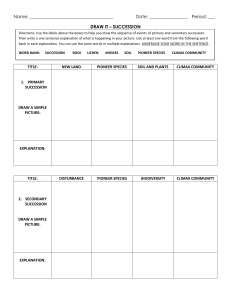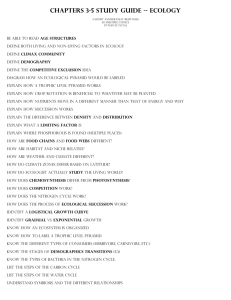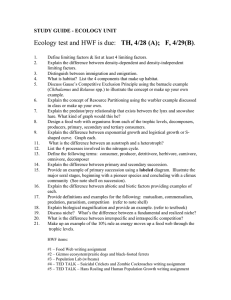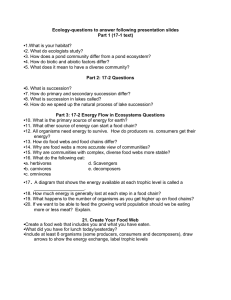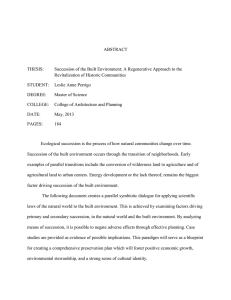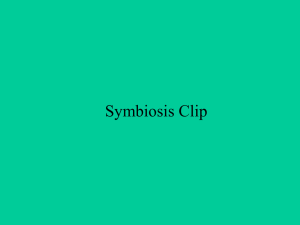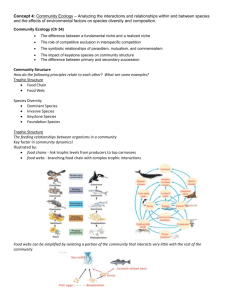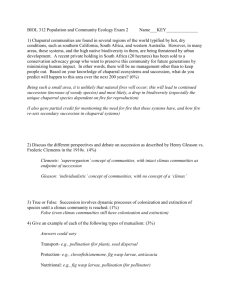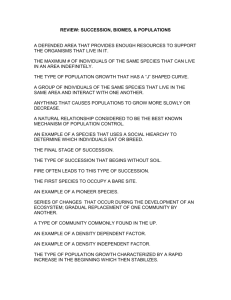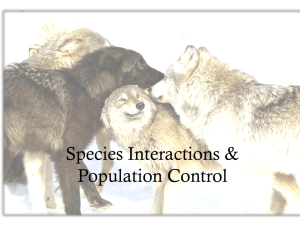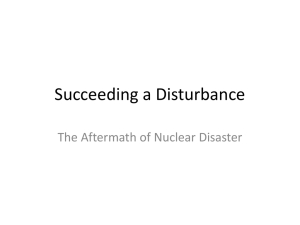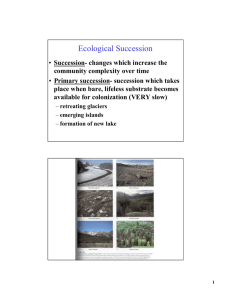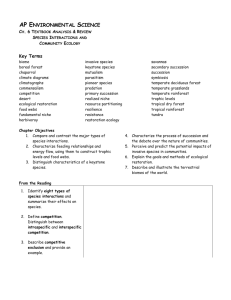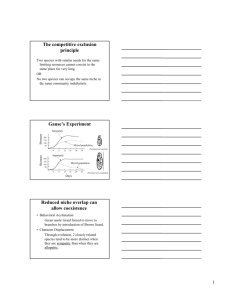Environmental Science Chapter 4+5 Test Review Sheet
advertisement
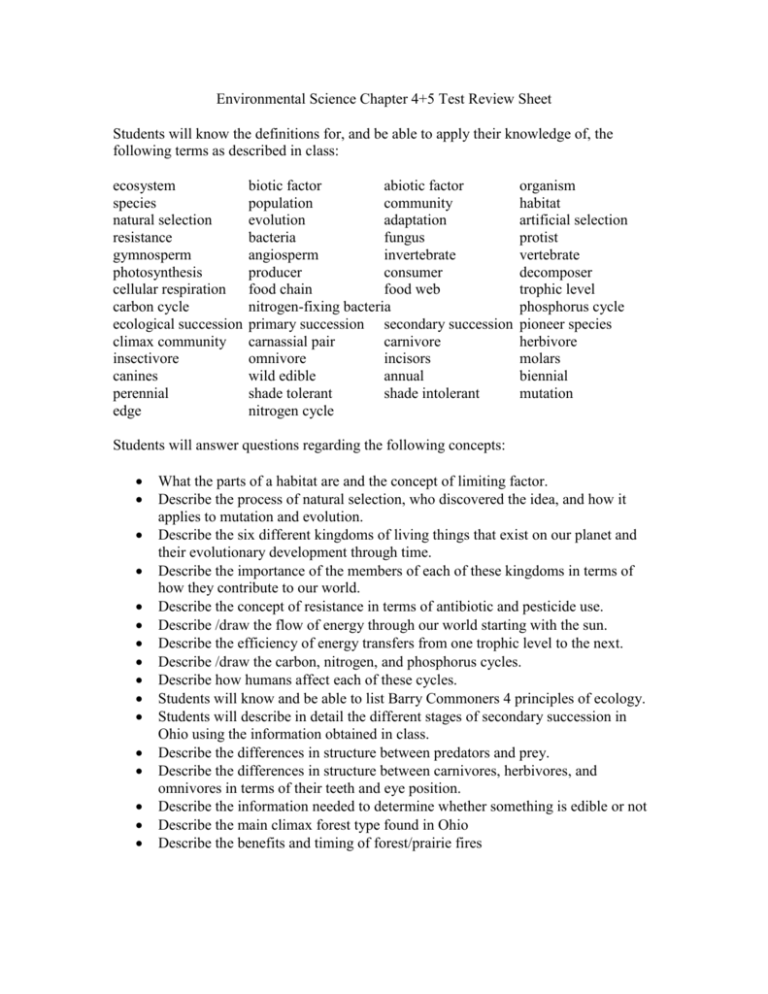
Environmental Science Chapter 4+5 Test Review Sheet Students will know the definitions for, and be able to apply their knowledge of, the following terms as described in class: ecosystem species natural selection resistance gymnosperm photosynthesis cellular respiration carbon cycle ecological succession climax community insectivore canines perennial edge biotic factor abiotic factor population community evolution adaptation bacteria fungus angiosperm invertebrate producer consumer food chain food web nitrogen-fixing bacteria primary succession secondary succession carnassial pair carnivore omnivore incisors wild edible annual shade tolerant shade intolerant nitrogen cycle organism habitat artificial selection protist vertebrate decomposer trophic level phosphorus cycle pioneer species herbivore molars biennial mutation Students will answer questions regarding the following concepts: What the parts of a habitat are and the concept of limiting factor. Describe the process of natural selection, who discovered the idea, and how it applies to mutation and evolution. Describe the six different kingdoms of living things that exist on our planet and their evolutionary development through time. Describe the importance of the members of each of these kingdoms in terms of how they contribute to our world. Describe the concept of resistance in terms of antibiotic and pesticide use. Describe /draw the flow of energy through our world starting with the sun. Describe the efficiency of energy transfers from one trophic level to the next. Describe /draw the carbon, nitrogen, and phosphorus cycles. Describe how humans affect each of these cycles. Students will know and be able to list Barry Commoners 4 principles of ecology. Students will describe in detail the different stages of secondary succession in Ohio using the information obtained in class. Describe the differences in structure between predators and prey. Describe the differences in structure between carnivores, herbivores, and omnivores in terms of their teeth and eye position. Describe the information needed to determine whether something is edible or not Describe the main climax forest type found in Ohio Describe the benefits and timing of forest/prairie fires
